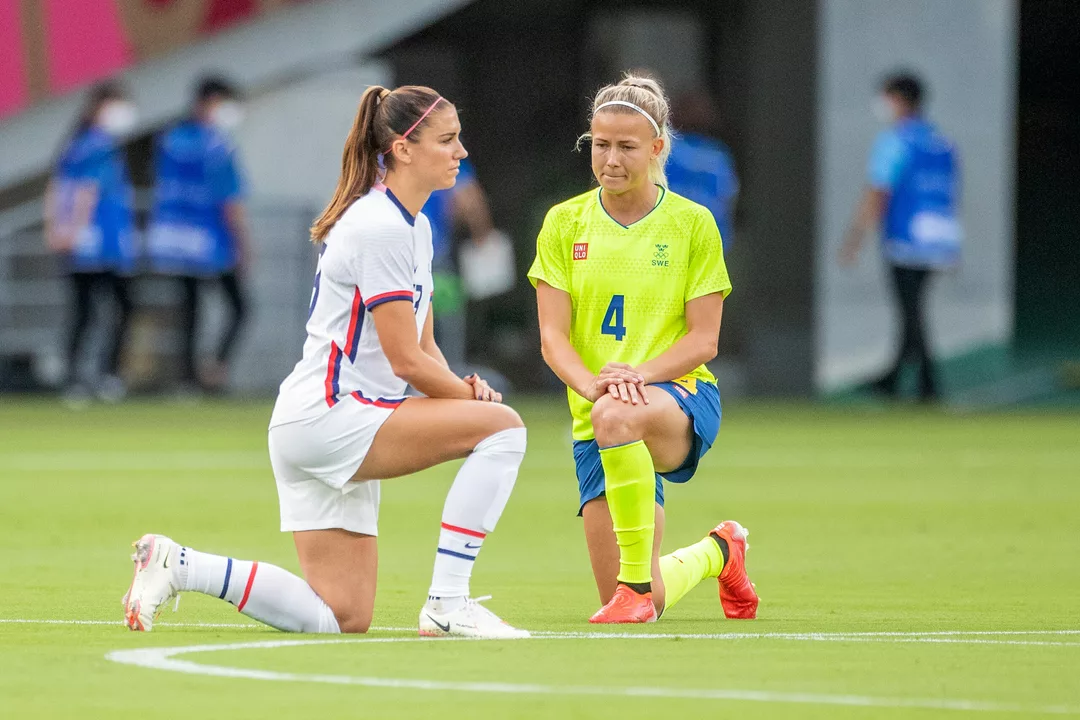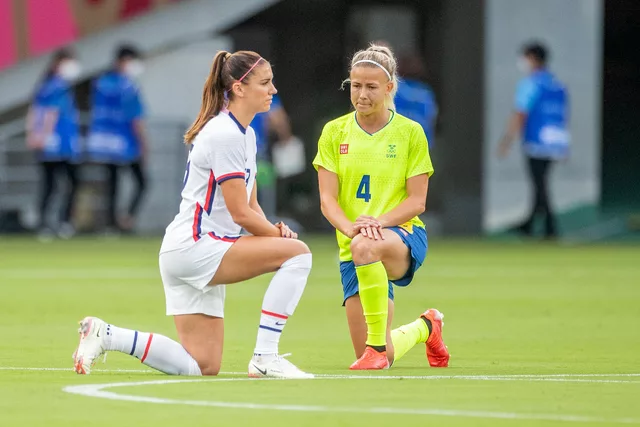Is the U.S. losing its dominance over women's soccer?

Evaluating the Impact of U.S. Women's Soccer: Is the U.S. Losing Its Dominance?
The U.S. Women's National Soccer Team (USWNT) has been a powerhouse in the sport, consistently winning championships and dominating international play. However, recent trends suggest that the U.S. is losing its grip on the sport, with other countries making gains. Is the U.S. losing its dominance over women's soccer?
The U.S. has long been the top-ranked women's soccer team in the world, winning four of the last five World Cups and six of the last seven Olympic gold medals. However, the team's dominance is slipping. The USWNT dropped to second place in the FIFA ranking in November 2019, the first time since March 2015 that the U.S. was not the top-ranked team. This drop in ranking is due in part to the rise of other countries in the sport, such as France, England, and Germany.
The U.S. is also losing ground in terms of sponsorship dollars. The USWNT has traditionally been the top earner in women's soccer when it comes to sponsorship deals, but recently other teams have become more attractive to sponsors. Teams in Europe, such as France, England, and Germany, have seen an increase in sponsorship deals, while the U.S. has seen a decline. This shift in sponsor money is a sign that the U.S. is no longer the top dog in the sport.
The U.S. is also falling behind in terms of the development of young talent. While the U.S. has traditionally been a leader in the development of young female players, other countries have caught up. European countries have invested heavily in youth development, creating a pipeline of talent that is producing world-class players. This has resulted in a shift away from the U.S. as the leader in the development of young talent.
It is clear that the U.S. is losing its grip on women's soccer. The U.S. is no longer the top-ranked team, is falling behind in terms of sponsorship dollars, and is losing ground in the development of young talent. While the U.S. has long been the dominant force in women's soccer, it appears that this is no longer the case. Other countries have caught up and are now challenging the U.S. for supremacy in the sport.
A Look at the Evolving Landscape of Women's Soccer: Is the U.S. Losing Its Dominance?
Women's soccer has come a long way in the past few decades. With the sport growing in popularity and more countries investing in it, the competitive landscape is changing. The U.S. has traditionally dominated the women's game, but is now facing stiff competition from other countries. So, is the U.S. losing its grip on the women's game?
The U.S. has long been a powerhouse in women's soccer. The first Women's World Cup was held in 1991 and the U.S. won it. The Americans have gone on to win four out of the seven tournaments, most recently in 2015. The U.S. has also been successful in Olympic competition, winning the gold medal in four of the five tournaments since women's soccer was added to the Olympics in 1996.
However, the U.S. is no longer the undisputed superpower in women's soccer. Other countries are catching up and making their presence felt. Japan won the 2011 Women's World Cup, as well as the silver medal in the 2012 Olympics. Germany has won two World Cup titles, and England is also emerging as a powerhouse, winning the bronze medal at the 2019 World Cup.
The U.S. is still the top ranked team in the world, but its lead has been shrinking. Other countries are investing heavily in their women's teams, including France, Japan, and England. This has led to more competitive teams, and the U.S. is no longer a sure bet to win. The Americans may have to fight harder than ever to stay on top.
It is clear that the landscape of women's soccer is changing. The U.S. is no longer the undisputed superpower, and other countries are rising to challenge them. The U.S. still has a strong team, but they can no longer take their dominance for granted. The competition is heating up, and the U.S. will have to work hard to stay on top.
Examining the Growing Popularity of Women's Soccer: Is the U.S. Losing Its Dominance?
In recent years, the popularity of women's soccer has grown significantly, with female players and teams now being respected and celebrated as much as their male counterparts. As the sport continues to grow, one of the most interesting questions is whether the U.S. is still the dominant force in the sport.
The U.S. has had a long and successful history in women's soccer. It has won three of the seven FIFA Women's World Cup tournaments, as well as four Olympic gold medals. The U.S. is also the most successful team in the CONCACAF Women's Championship, having won 11 of the 12 tournaments. The U.S. team is also consistently ranked in the top 10 in the FIFA Women's World Rankings.
However, in recent years, other countries have begun to challenge the U.S.'s dominance. The most notable example is the rise of Japan, who won the 2011 FIFA Women's World Cup, becoming the first Asian team to do so. Japan has since become a regular in the top 10 of the FIFA Women's World Rankings. Other countries such as France, England, and Germany have also made strides in the sport, with France finishing second in the 2019 FIFA Women's World Cup.
Despite this, the U.S. is still very much a force to be reckoned with in the sport. This is evidenced by the fact that the U.S. team is the only team to have qualified for every FIFA Women's World Cup since the tournament's inception in 1991. They are also the only team to have won three FIFA Women's World Cups and four Olympic gold medals.
So, while other countries have certainly made strides in the sport, the U.S. is still the dominant force in women's soccer. However, with other countries continuing to make improvements and invest in the sport, it will be interesting to see whether the U.S. is able to maintain its dominance in the coming years.
